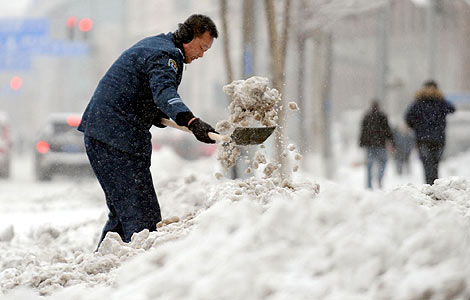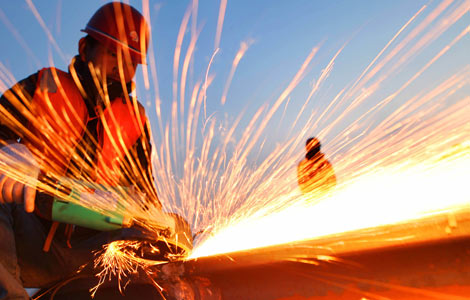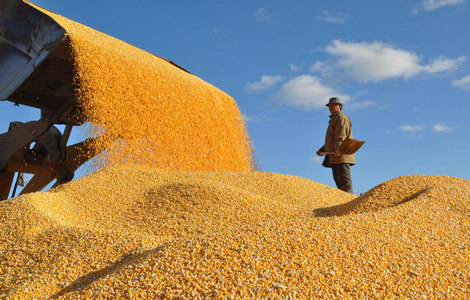
More gauges, such as levels of heavy metal and persistent organic pollutants, will be used to evaluate the quality of major rivers and lakes, an official said on Thursday.
China has been trying to combat water pollutants after several major river pollution cases triggered a public outcry.
A total of 22 indicators will be used to evaluate river quality during the 12th Five-Year Plan (2011-15) period, Zhao Hualin, head of the pollution prevention department under the Ministry of Environmental Protection, said at a news conference.
Chemical oxygen demand, a test commonly used to measure the amount of organic compounds in water, is the major indicator used to evaluate water quality nationwide. Other indicators are used in some areas but have not been adopted in the national evaluation system.
After more gauges, such as heavy metal, become national standards, the water quality of some rivers may be downgraded for a certain period of time, said Ling Jiang, deputy head of the department. "But stricter evaluation will be good in the long term."
China's awareness of water safety has been heightened following several major pollution cases in recent years.
A recent case happened in South China's Guangxi Zhuang autonomous region in January, when cadmium contamination was detected in the Longjiang River after large numbers of dead fish appeared.
The latest public outcry over water safety came after a Century Weekly magazine report earlier this month, citing unnamed insiders, said that about half of urban tap water failed to meet national quality standards.
The government later said the rate was 17 percent in 2011.
Amid enhanced public awareness, the government has vowed to bring an end to water pollution and ensure drinking water safety.
According to a plan approved by the State Council on April 16, China aims to improve the water quality of major rivers and lakes from "moderately polluted" to "slightly polluted", Zhao said on Thursday.
Under the plan, 49.2 percent of the rivers and the lakes monitored by the central authorities should meet at least Grade III standards by the end of 2015. That will be an increase of 5 percentage points from 2010.
The country also plans to reduce the proportion of "worse-than-Grade-V" water by 8 percentage points in five years from 25.8 percent in 2010. In China, river water quality is measured in six levels, from Grade I to Grade V and another grade called "worse than Grade V". Only Grade I and II water can be used as drinking water sources, according to regulations.
An estimated 500 billion yuan ($79.1 billion) will be spent from 2011 to 2015 to ease the pollution in 10 major rivers and lakes monitored by the central government.
They include Songhua River in Northeast China, Haihe River close to Beijing, and Taihu Lake in East China.
You can contact the reporter at wuwencong@chinadaily.com.cn







